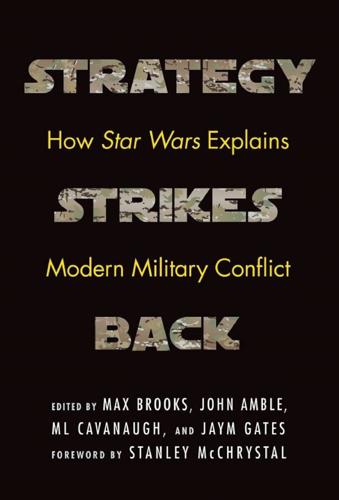
Strategy Strikes Back: How Star Wars Explains Modern Military Conflict
by
Max Brooks
,
John Amble
,
M. L. Cavanaugh
and
Jaym Gates
Published 14 May 2018
Matt thought the best way to help people understand strategy is through a story we all know and love: Star Wars. With the exception of my wife (who still refers to everything sci-fi as “Dungeons and Dragons”), the rest of the human race is pretty well versed on the saga that took place “a long time ago in a galaxy far, far away.” The appeal of Star Wars is international and multigenerational, and it’s got plenty of fans in uniform. Matt tested fiction as a tool in his West Point classroom; after refining it while serving overseas, he decided to take it mainstream with Star Wars. He put out a call to those in the military, academia, and fiction (like myself) and asked us if we’d be interested in writing essays about real warfare told through the lens of George Lucas (and now J.
…
Farwell and Rafal Rohozinski, “Stuxnet and the Future of Cyber War,” Survival 53, no. 1 (2011): 28. 5 Civil-Military Relationships in Star Wars Daniel D. Maurer Science fiction sets out not so much to explore the possibilities of the future as to comment on the crises that it sees imminent in contemporary life. Christopher Coker, Can War Be Eliminated? With each Star Wars episode’s famous opening line—“A long time ago in a galaxy far, far away . . .”—viewers are invited to witness a drama whose iconic characters display the same fundamental menu of fears, ambitions, motives, and loyalties shared by actors throughout the great conflicts of history, both recent and ancient.1 The themes of Star Wars—ego, power, sin, corruption, loyalty, choosing sides, rebelling against tyrannical authority, love for one’s brothers-in-arms, accountability for crimes, faith in a power greater than one’s natural abilities and intellect can imagine, and hope that the light will overcome the dark in the end—are universal and timeless, as applicable to us as they are to Wookiees and Ewoks, or Hamlet and Henry V.
…
Today, we have to assume that critical infrastructure (like the Death Star’s shield generator) would more likely be hacked than blown up. As we look at hybrid warfare on Earth, we cannot be so distracted by shooting and explosions that we neglect to look for major attacks in the cyber domain. Second, we can and should take seriously the idea that the Alliance employed hybrid warfare “a long time ago in a galaxy far, far away.” Despite all the focus on hybrid, or gray-zone, warfare in recent years, it is not some newfangled creation, nor is it employed exclusively by U.S. adversaries. As Admiral (Ret.) Stavridis has written elsewhere, “Hybrid warfare is as old as combat itself. There is nothing fundamentally new about incorporating unconventional, and unacknowledged, forces on the battlefield in surprising ways to undermine conventional forces and obscure attribution.”6 Identifying and exploiting asymmetries is the essence of strategy—war is the continuation of policy not by the enemy’s chosen means but by the means most likely to damage the enemy.
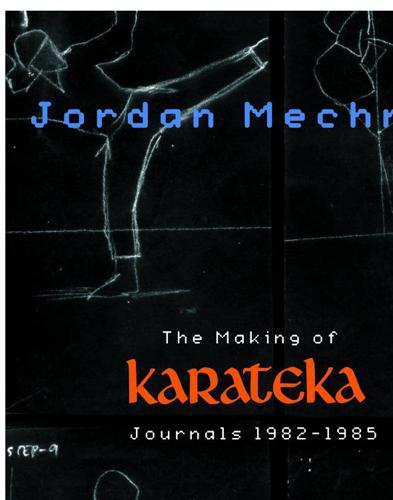
The Making of Karateka: Journals 1982-1985
by
Jordan Mechner
Published 26 Dec 2012
The tension built geometrically: During the final ten-second countdown, as the audience’s noise level rose to a roar, I reached a level of excitement so high that if the countdown had been prolonged five more seconds I might have suffered a heart attack. On “three” the lights began to dim at; on “zero” the curtain began to rise; and the crowd went wild. A big, beautiful, curved screen, filling our fields of vision. 20th Century Fox. A Lucasfilm Ltd. Production. A long time ago in a galaxy far, far away… STAR WARS. The picture, the sound, the theater, the audience, the movie: everything was perfect. May 29, 1983 Wrote 31 pages of my novel. That’s 53 pages so far. Browsed in Tower Books. Read Dean R. Koontz’s How to Write Best-Selling Fiction. Very helpful. June 4, 1983 Hines, Burster and Ben shocked me out of my skull in the afternoon with a pyrotechnic birthday greeting, a hail of balloons, and a cake with unsnuffable candles.

Humankind: Solidarity With Non-Human People
by
Timothy Morton
Published 14 Oct 2017
The five-dimensional future humans (the spectral “Them”) have created a wormhole near Saturn. When Cooper asks where the wormhole leads, Professor Brand intones, “Another galaxy.” One instantly wonders whether the movie they are all about to go and see is Star Wars, with its escapist “A long time ago in a galaxy far, far away.” This is one instance in which escapism is politically charged within the film, and in a good way, because the “long time ago” and “galaxy far, far away” are indicated as aspects of humankindness as such, in a Feuerbachian sense, that have merely been displaced. Alienation is what makes them seem far away and long ago.

Dreyer's English: An Utterly Correct Guide to Clarity and Style
by
Benjamin Dreyer
Published 15 Jan 2019
It debuted in a 1902 Broadway musical in which, perhaps because little dogs are intractable and hard to see in a large theater, a cow named Imogene was subbed in for the beloved Toto. No, not a real cow. Don’t be silly. WOOKIEE Everyone gets it wrong. It’s not “Wookie.” Also on the subject of the world of Star Wars, “lightsaber” is one word, “dark side” is lowercased (oddly enough), and “A long time ago in a galaxy far, far away….” ends with a period and three ellipsis points, even though it is a fragment and not a complete sentence, because that is how the Star Wars people like it. And if you challenge them on any of these points, they’ll cut your hand off. True story. ASSORTED BRAND NAMES AND TRADEMARKS YOU’LL WANT TO SPELL CORRECTLY Trademarks tend over the long haul to lose their capital letters, thus transforming from proper nouns to—no, not improper, though that would be fun—common nouns, sometimes because the company that established them vanishes, often because the trademark becomes so utterly synonymous with the thing itself that the transformation is irresistible.
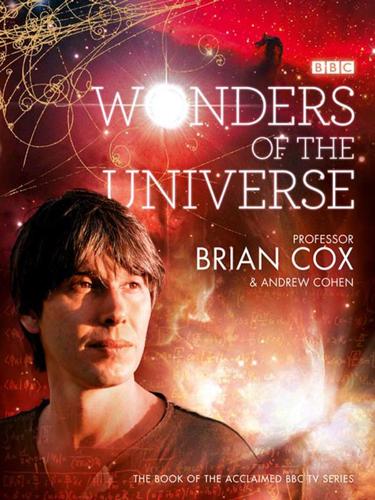
Wonders of the Universe
by
Brian Cox
and
Andrew Cohen
Published 12 Jul 2011
It’s not just the story of the death of this star, revealed by the brief appearance of the pale red dot, that has captivated astronomers, it’s the age of it. The light from this dot has travelled a very long way across the Universe to reach us, and has taken a very long time to do it. When we look at the afterglow of this explosion, we are looking at an event that happened a long time ago, in a galaxy far, far away. In fact, this light has been travelling towards us for almost the entire history of the Universe. GRB 090423 died over thirteen billion years ago, just over 600 million years after the Universe began. This is incredibly early in the Universe’s history. At the time of filming Wonders of the Universe, in autumn 2010, GRB 090423 was the oldest single object ever seen, although just after filming a galaxy was discovered in the Hubble Space Telescope’s Ultra Deep Field Image (see Chapter 3) that is slightly older than GRB 090423.
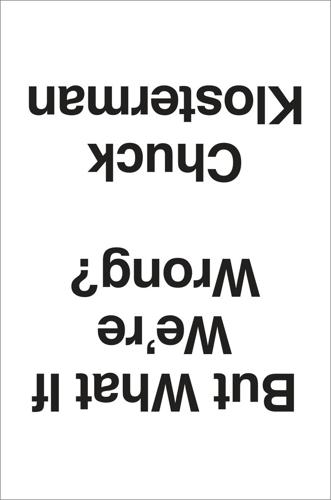
But What if We're Wrong? Thinking About the Present as if It Were the Past
by
Chuck Klosterman
Published 6 Jun 2016
But it’s more straightforward than it seems: Our present time will eventually become the past, hence the designation “present (past).” Our future will eventually become the present, hence “present (future).” It’s kind of like the prologue to Star Wars, where we are told that the following events happened “a long time ago, in a galaxy far, far away.” But the people in Star Wars shoot laser guns and travel at the speed of light, so we are forced to conclude that their past is our future. 19 Here’s a simple way to parse this not-so-simple description: Play the song “Rock and Roll” by Led Zeppelin. Based on a traditional twelve-bar blues progression, “Rock and Roll” is the only song in the Zeppelin catalog that is literally rock and roll music, unless you count “Hot Dog” and “Boogie with Stu.”
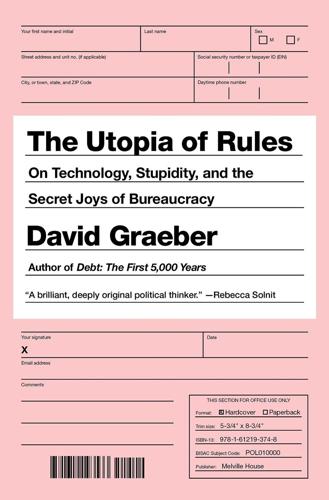
Bureaucracy
by
David Graeber
Published 3 Feb 2015
Later science fiction futures were largely dystopian, moving from bleak technofascism into some kind of stone-age barbarism, as in Cloud Atlas, or else, studiously ambiguous: the writers remaining coy about the dates, which renders “the future” a zone of pure fantasy, no different really than Middle Earth or Cimmeria. They might even, as with Star Wars, place the future in the past, “a long time ago in a galaxy far, far away.” This Future is, most often, not really a future at all, but more like an alternative dimension, a dream-time, some kind of technological Elsewhere, existing in days to come in the same sense that elves and dragon-slayers existed in the past; just another screen for the projection of moral dramas and mythic fantasies.
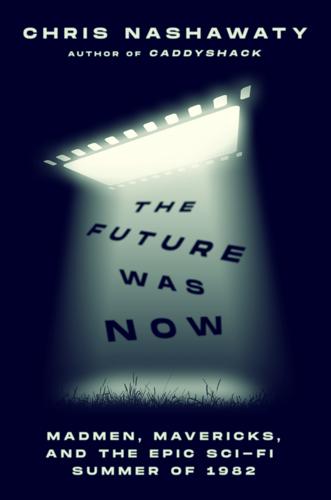
The Future Was Now: Madmen, Mavericks, and the Epic Sci-Fi Summer Of 1982
by
Chris Nashawaty
In short, these eight films would become a bridge that connected the European-influenced Hollywood New Wave of the late ’60s and ’70s with the shock-and-awe tentpole era of the ’90s and beyond. For better, and for worse, they would each in their own unique ways end up showing the movie business a new path forward. * * * It all started a long time ago in a galaxy far, far away. When George Lucas’s Star Wars first stormed theaters on May 25, 1977, Hollywood had been caught napping, including that film’s own studio, 20th Century Fox. Although Fox had bankrolled the strange but relatively inexpensive (and therefore small-risk) space epic from the painfully shy director of American Graffiti, the studio didn’t truly know what it had on its hands.

More Joel on Software
by
Joel Spolsky
Published 25 Jun 2008
. . . 177 twenty-three Making Wrong Code Look Wrong . . . . . . . . . 183 part six Starting a Software Business . . . . . . . . . 201 twenty-four Foreword to Eric Sink on the Business of Software . . . . . . . . . . . . . . . . . . 203 twenty-five Foreword to Micro-ISV: From Vision to Reality . . . . . . . . . . . . . . . . . . . . . . . 207 twenty-six Hitting the High Notes . . . . . . . . . . . . . . . 211 part seven Running a Software Business . . . . . . . . . 221 twenty-seven Bionic Office . . . . . . . . . . . . . . . . . . . . . 223 twenty-eight Up the Tata Without a Tutu . . . . . . . . . . . . 227 twenty-nine Simplicity . . . . . . . . . . . . . . . . . . . . . . . 231 Contents vii thirty Rub a Dub Dub . . . . . . . . . . . . . . . . . . . 235 thirty-one Top Twelve Tips for Running a Beta Test . . . . . 241 thirty-two Seven Steps to Remarkable Customer Service . . 245 part eight Releasing Software . . . . . . . . . . . . . . . . 255 thirty-three Picking a Ship Date . . . . . . . . . . . . . . . . . 257 thirty-four Camels and Rubber Duckies . . . . . . . . . . . . 263 part nine Revising Software . . . . . . . . . . . . . . . . 281 thirty-five Five Whys . . . . . . . . . . . . . . . . . . . . . . . 283 thirty-six Set Your Priorities . . . . . . . . . . . . . . . . . . 289 Index . . . . . . . . . . . . . . . . . . . . . . . . . 297 JOEL, APRESS, BLOGS, AND BLOOKS “A long time ago in a galaxy far, far away . . .” Well, actually it was late in 2000, during Apress’s first full year of operation. We were a tiny little computer book publisher then, with little name recognition, and we planned to publish only a handful of books that year—roughly as many books for that whole year as Apress now publishes in a single month.
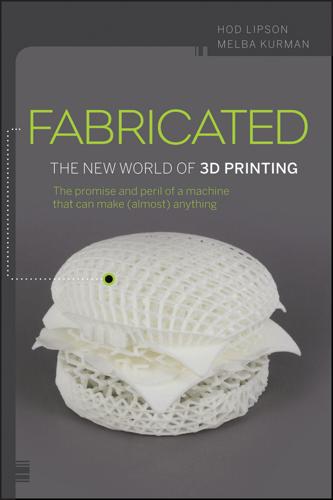
Fabricated: The New World of 3D Printing
by
Hod Lipson
and
Melba Kurman
Published 20 Nov 2012
If you can create a machine that can make other machines, you will have attained a new level of creation. Image from NASA-commissioned study, “A Self-Replicating, Growing Lunar Factory,” Robert A. Freitas Jr. and William P. Gilbreath, AIAA, 1981 Image courtesy of Robert A. Freitas Jr. (www.rfreitas.com) In the future (or a long time ago in a galaxy far, far away) machines will make machines. 3D printers are the first wave of a new generation of machines that will design, make, repair, and recycle other machines. Machines will even adapt and improve other machines—and themselves. I once took my son to watch one of the episodes of Star Wars.

Visual Thinking: The Hidden Gifts of People Who Think in Pictures, Patterns, and Abstractions
by
Temple Grandin, Ph.d.
Published 11 Oct 2022
Vast amounts of the merchandise you buy online travel to the United States on container ships built in other countries. Also in the blow-my-mind department is a huge computer chip–making machine that I first read about in 2020 in The Economist. This incredible machine could have come from a long time ago in a galaxy far, far away. It was a huge rectangular box the height of a bus, and the outside, with white panels all around, gave no hint whatsoever what it would be like inside. Inside, a maze of silver pipes both big and small were connected to boxes, valves, and electronic devices. This is the part where you could hear the Star Wars theme song: ultraviolet light beams bounced back and forth between multiple mirrors to create the thinnest of lines, thinner than a strand of hair.

Life's Greatest Secret: The Race to Crack the Genetic Code
by
Matthew Cobb
Published 6 Jul 2015
Their surprising suggestion was that life on Earth originated with microorganisms that ‘travelled in the head of an unmanned spaceship sent to earth by a higher civilisation which had developed elsewhere some billions of years ago.’6 Aside from the distinct lack of proof, this does not explain the origin of life at all – it simply puts the problem back a long time ago in a galaxy far, far away.7 It is possible that life originated elsewhere in the Universe and came to Earth on a meteorite or a comet. However, that hypothesis does not seem to be necessary – we seem to be within touching distance of understanding the chemical dynamics that created life spontaneously. Proteins and DNA, which are so important to life today, have not always been present.

Practical Ext JS Projects With Gears
by
Frank Zammetti
Published 7 Jul 2009
Of course, while all of these are fine toolkits, we’re here to talk about one that’s not in that list, one that I feel is quite possibly the best available today: Ext JS. 15 16 Ch aPt er 1 ■ INtr ODU C ING W eB DeVeL OP M e N t W I t h e X t JS Enter Ext JS: The best of the bunch A long time ago in a galaxy far, far away (more precisely, early 2006, the planet Earth), a gentleman by the name of Jack Slocum developed a set of extension utilities to the YUI library. These utilities rapidly gained popularity within the YUI community and were quickly organized into an independent library called YUI-Ext.

Nobody's Perfect: Writings From the New Yorker
by
Anthony Lane
Published 26 Aug 2002
It’s a shame, because much of The Mummy is a blast, and you cheerfully root for Brendan Fraser; he promises such innocent fun, and yet the film teases the innocence away from him. Lady, there’s something in this movie. In a word, ignorance. MAY 10, 1999 THE PHANTOM MENACE A long time ago, in a galaxy far, far away, people made movies with people in them, and some of those movies made sense. Then something happened, and the people started to vanish from the movies, along with most of the sense. For a while, the spectacle was fun to observe, but slowly the pictures tipped into insanity, or, at any rate, into the hypnotically bad.